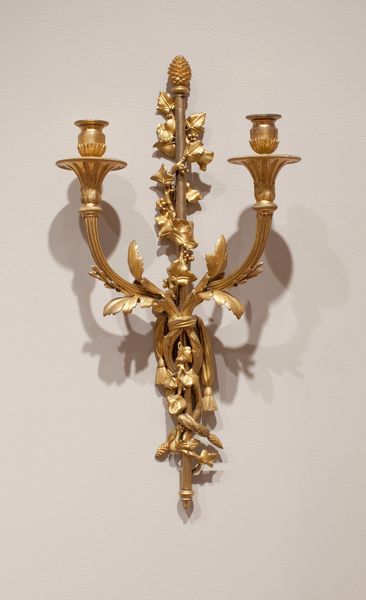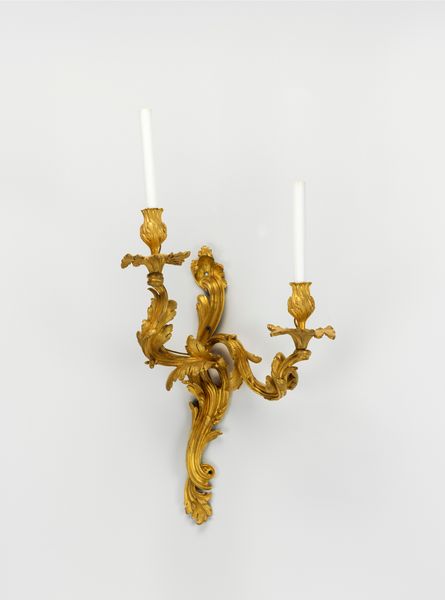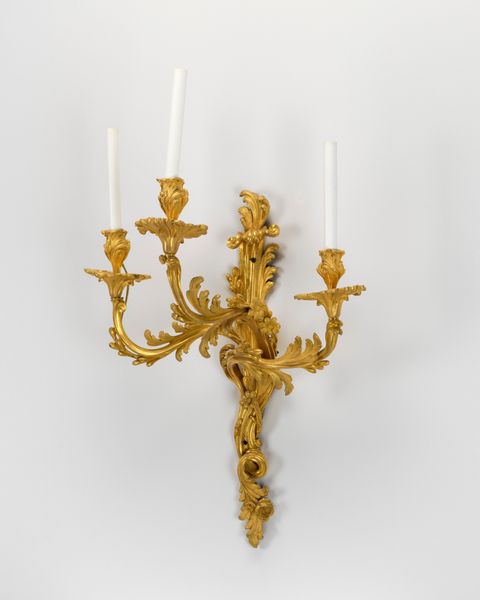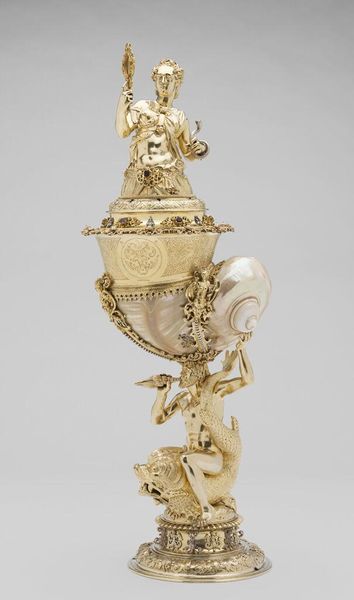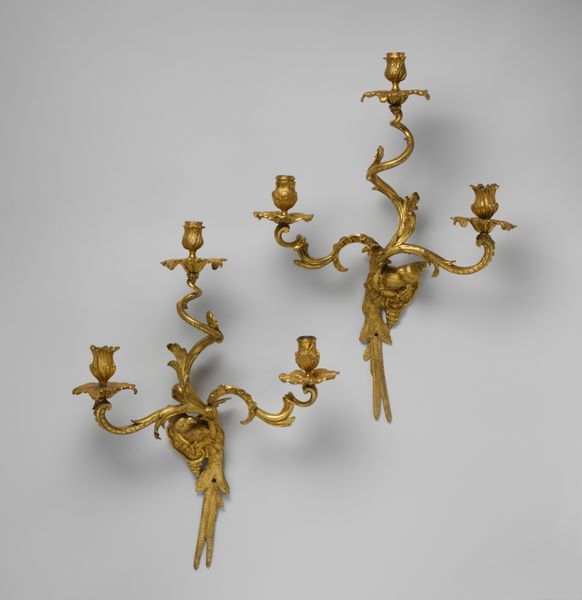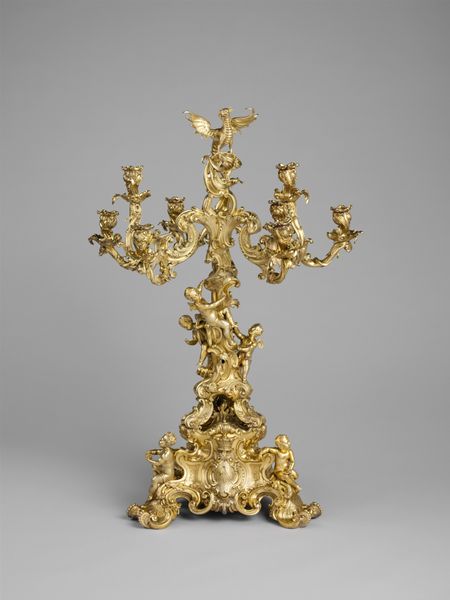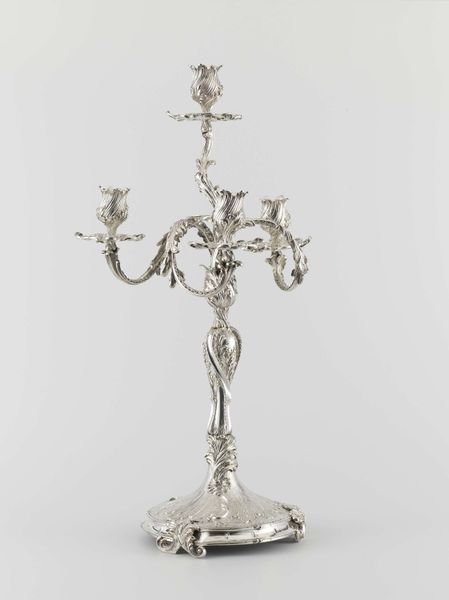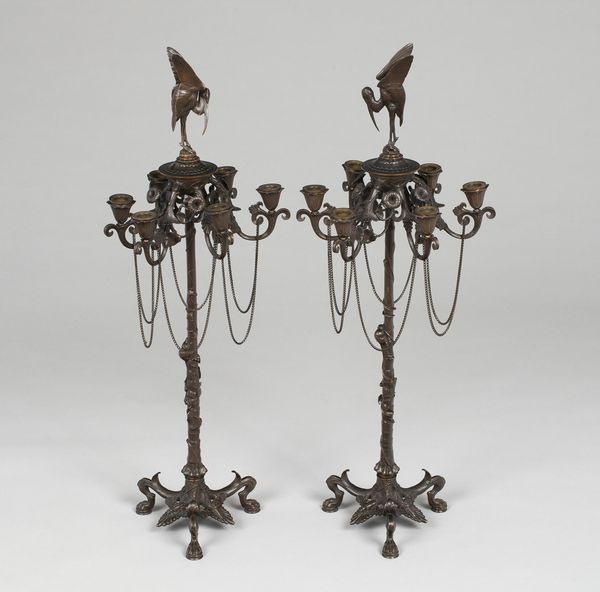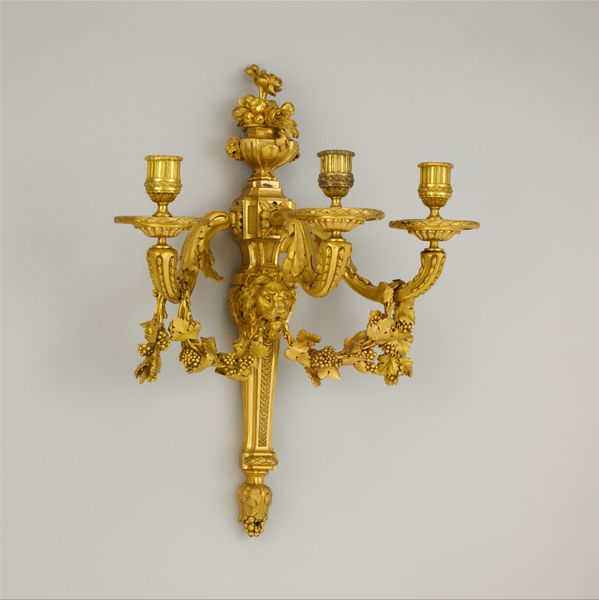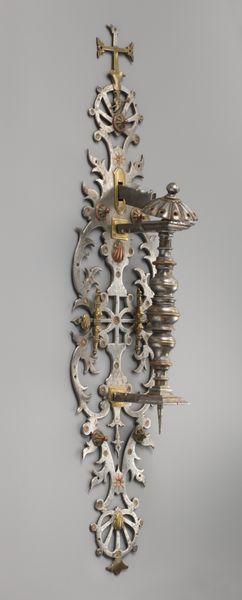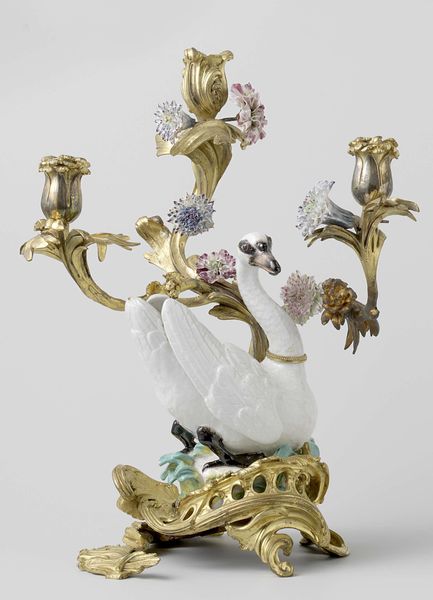
brass, metal, sculpture
#
brass
#
baroque
#
metal
#
sculpture
#
sculpture
#
decorative-art
Dimensions: 22 3/4 x 12 x 5 3/4 in. (57.8 x 30.5 x 14.6 cm)
Copyright: Public Domain
Curator: Take a look at this stunning wall sconce, estimated to have been crafted sometime in the 18th century. It’s made of brass and is a gorgeous example of decorative art. Editor: My initial impression is just… lavish. The gilded surfaces and intricate floral and ribbon motifs evoke a very specific kind of aristocratic excess. What social strata were enjoying candlelight of this caliber? Curator: Exactly! It really speaks to the vast disparities of wealth in 18th-century society. Think about who owned something like this: likely royalty or the extremely wealthy upper class who enjoyed these luxuries and displays of affluence. It underscores how art objects weren't just aesthetic, but deeply embedded in social hierarchies. Editor: And the materials themselves, the brass, the gilding. Were they locally sourced? What kind of labor went into its production? Were these highly skilled artisans or piecework done under exploitative conditions? It forces one to consider labor conditions, doesn't it? Curator: Absolutely. Beyond the object itself, examining the means of production exposes the human cost of this beauty, often extracted through systems of inequality. It urges us to critique that power structure. The sconce, then, becomes a physical marker of inequity. Editor: Yes, seeing the sconce through this lens disrupts its seemingly innocent decorative purpose. It serves as a tangible reminder that material wealth is usually achieved on the backs of others. The weight and composition also contribute to the overall meaning – its very construction carries cultural weight. Curator: Precisely. I think questioning the creation of beautiful art challenges traditional romantic notions surrounding art history. Considering who was excluded from its creation and enjoyment expands our understanding of art and power. Editor: Reflecting on it, the piece prompts an uncomfortable, but crucial, re-evaluation of what constitutes “artistic value,” urging us to consider ethics alongside aesthetics. Curator: I agree. It's important for museums to embrace this perspective, presenting artifacts in ways that promote broader dialogues and critical examinations.
Comments
No comments
Be the first to comment and join the conversation on the ultimate creative platform.
